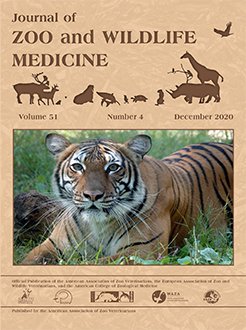Brucella ceti, associated with neurobrucellosis, has been isolated from cerebrospinal fluid (CSF) of postmortem cetaceans. A 106-kg, stranded female bottlenose dolphin (Tursiops truncatus) presented with serum antibodies to Brucella spp. via competitive enzyme-linked immunosorbent assay and fluorescence polarization assay. Polymerase chain reaction (PCR) and culture of whole blood, bronchoalveolar fluid, and rectal, nasal, and genital swabs for Brucella spp. were consistently negative. Serial computed tomography revealed mild focal dilatation of brain ventricles. CSF sampling was warranted to exclude neurobrucellosis. Sedation was achieved with 30 mg diazepam (0.28 mg/kg) orally 2.5 hours prior to arrival in hospital, followed by 5.3 mg midazolam (0.05 mg/kg) intramuscularly, and anesthetic induction with 2.5 mg midazolam (0.02 mg/kg) and 200 mg propofol (2 mg/kg) administered slowly intravenously, followed by intubation and maintenance on sevoflurane using controlled mechanical and apneustic anesthesia ventilation. The atlanto-occipital joint was opened by flexing the upper cervical region with the animal in left lateral recumbency. A 20-ga × 6-inch spinal needle was advanced into the cisterna magna using radiographic guidance. CSF was collected successfully with no neurological deficits appreciable on recovery. Brucella spp. was not identified via PCR or culture. This represents the first report of an antemortem CSF tap in a cetacean.
How to translate text using browser tools
12 January 2021
CEREBROSPINAL FLUID SAMPLING IN A BOTTLENOSE DOLPHIN (TURSIOPS TRUNCATUS) UNDER GENERAL ANESTHESIA
Jennifer Russell,
Nicholas Jeffery,
James Bailey,
Steven Osborn,
Carolina Le-Bert,
Heidi Whitehead,
Hendrik Nollens
ACCESS THE FULL ARTICLE





